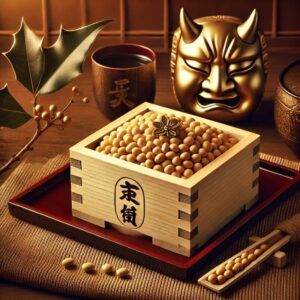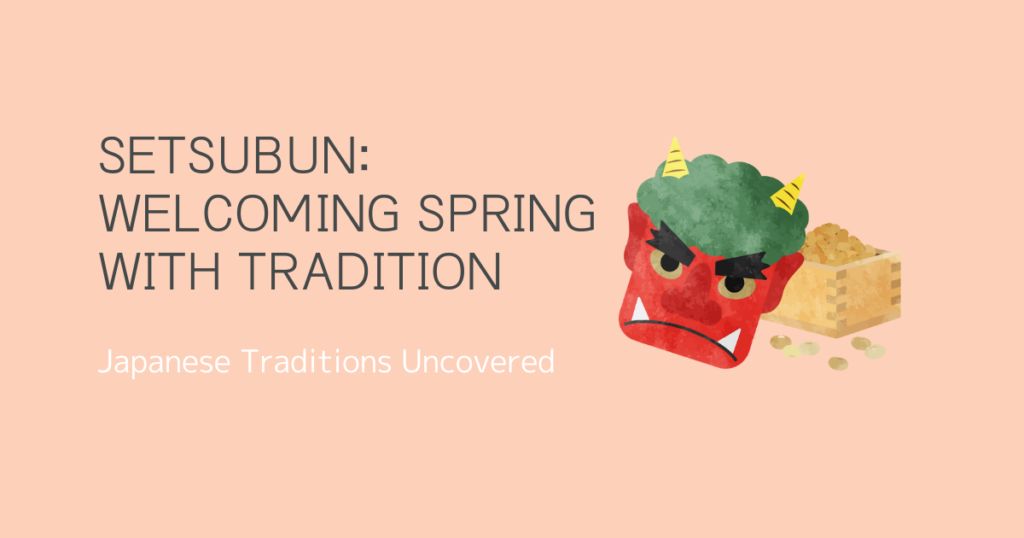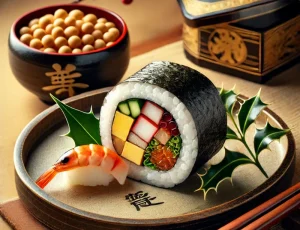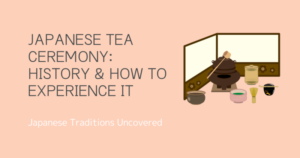1. What is Setsubun?
Setsubun (節分) is a traditional Japanese event celebrated on the day before Risshun (立春), the first day of spring according to the lunar calendar. In modern times, Setsubun is typically observed on February 3rd, though in some years, it may fall on February 2nd or February 4th.
The word “Setsubun” literally means “seasonal division,” and historically, it referred to the day before the start of each season (spring, summer, autumn, and winter). However, over time, only the spring Setsubun has remained an important annual event, marking the transition from winter to spring.
2. The Origins of Setsubun
The origins of Setsubun trace back to the Heian period (794–1185). The custom was influenced by an ancient Chinese ritual called Tsuina (追儺), a ceremony held at the imperial court to drive away evil spirits and misfortune. This practice evolved into the bean-throwing tradition (Mamemaki, 豆まき), which has become the most iconic part of Setsubun in Japan.
3. Traditional Customs of Setsubun
There are several customs and traditions associated with Setsubun.
① Mamemaki (Bean-Throwing Ritual)
Mamemaki (豆まき) is the most famous Setsubun tradition, where people throw roasted soybeans while chanting “Oni wa soto! Fuku wa uchi!” (“Demons out! Good fortune in!”) to drive away evil spirits and bring good luck into the home.
How to Perform Mamemaki:
- Open the windows or doors and shout, “Oni wa soto!” (Demons out!) while throwing beans outside.
- Quickly close the windows or doors and say, “Fuku wa uchi!” (Good fortune in!) while throwing beans inside the house.
- Finally, eat the same number of beans as your age plus one (for good health and longevity).
In recent years, many families use individually wrapped soybeans for easier cleanup.
🔹 My Family’s Setsubun Experience
When my children were younger, my husband would wear an Oni (demon) mask, and they would happily throw beans at him. At their kindergarten, they also had a Mamemaki event, making Setsubun an enjoyable and memorable experience.
Now that they are older, we no longer throw beans, but we still enjoy eating or making Ehomaki (恵方巻, lucky sushi rolls) together as a family.
② Ehomaki (Lucky Sushi Rolls)
Ehomaki (恵方巻) is a thick sushi roll eaten on Setsubun. This tradition originated in the Kansai region but has now spread throughout Japan.
To ensure good fortune, you must eat Ehomaki while facing the “lucky direction” (Eho, 恵方), which changes every year.
✅ Rules for Eating Ehomaki:
- Face the lucky direction (Eho) of the year.
- Make a wish and eat the sushi roll silently without stopping.
- Eat the entire roll without cutting it, as cutting is believed to “cut off luck.”
🌟 For 2025, the lucky direction is “West-Southwest, slightly west” (255 degrees).
🌟 The Setsubun date in 2025 is February 2nd.
Be sure to eat your Ehomaki while facing West-Southwest, slightly west!
Ehomaki has also gained popularity overseas, with Japanese restaurants and sushi chains promoting it as a “lucky sushi roll”.
③ Oni Masks and Demon Roleplay
In households with young children, one family member (often a parent) wears an Oni mask, while the children throw beans at them. Schools and kindergartens also organize Mamemaki events, where children joyfully chase away the “evil spirits”.

④ Hiiragi Iwashi (Holly and Sardine Decoration)
In some regions, people place Hiiragi Iwashi (柊鰯)—a holly branch with a grilled sardine head—on their front doors. It is believed that the thorny holly leaves and the strong smell of sardines keep demons away. However, this custom is becoming less common in modern Japan.
4. Setsubun’s Growing Popularity Abroad
In recent years, Setsubun has gained recognition outside Japan.
- Ehomaki is now sold in some Japanese restaurants and sushi chains worldwide, often marketed as a “lucky sushi roll.”
- Many people from outside Japan who live in Japan enjoy participating in Mamemaki and learning about the tradition.
As global interest in Japanese culture grows, Setsubun offers a fun and interactive way to experience Japanese customs.
5. Conclusion
Setsubun is a unique Japanese event that marks the arrival of spring and serves as a ritual to drive away misfortune and welcome good luck.
The combination of Mamemaki, Ehomaki, and Oni masks makes it an exciting and memorable tradition, enjoyed by both families and communities.
With Ehomaki becoming popular outside Japan, Setsubun is gradually gaining international recognition. It’s a great opportunity for people around the world to learn about and engage with Japanese culture!


